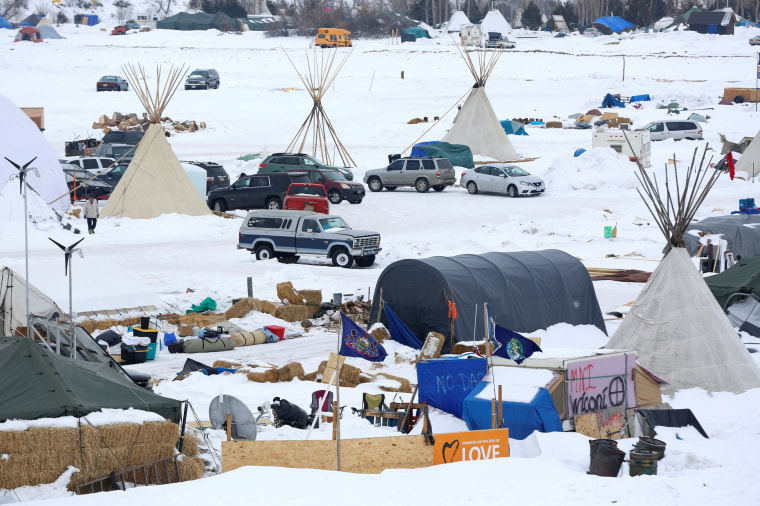The U.S. Army Corps of Engineers has given a evacuation order to those protesting at the Dakota Access Pipeline camp in Cannon Ball, North Dakota.
In a statement Friday evening, the Corps said it would close the Oceti Sakowin Camp, which sits on approximately 50 acres of Corps land, on Feb. 22 due to the "high potential for flooding" in the low-lying area.
The land sits at the confluence of the Missouri and Cannonball Rivers, which the Corps says puts it at particular risk of flooding after a winter of record snowfall in the region.
The Corps said oil erosion and pollution — which it attributed to the "unauthorized placement of structures, vehicles, personal property, and fires" on the land over the course of more than six months — could result in contaminated runoff into both rivers.
"As stewards of the public lands and natural resources, we have a responsibility to the public to prevent injuries and loss of life," said U.S. Army Corps of Engineers Omaha District Commander, Col. John Henderson. "We must also ensure our precious water resources are free from pollution due to human activities and respect for all who rely on this water for their livelihoods."
A senior U.S. Defense official confirmed to NBC News that members of Congress were notified today of the decision.
The decision could be the final, decisive blow for a protest movement that began at the camp in early August with just a few dozen protesters — who call themselves water protectors — from the Standing Rock Sioux tribe and blossomed into a movement captivated the nation with thousands of Native Americans and environmental activists flocking to the remote North Dakota plains to stop the $3.7 billion pipeline.
The pipeline would run within a half-mile of the Standing Rock Sioux reservation, crossing beneath the Missouri River. The tribe says it could adversely impact their drinking water and destroy sacred sites where many of their ancestors are buried.
In late November, North Dakota Gov. Jack Dalrymple issued a similar evacuation order, citing "severe winter conditions." The order was followed up days later by a U.S. Army Corps deadline of Dec. 5.
The orders drew thousands more to the camp in solidarity, including groups of U.S. military veterans who vowed to act as "human shields" against possible clashes between demonstrators and law enforcement.
On Dec. 4, just hours before that deadline, the Corps turned down a permit for the project in what would be a short-lived victory for the tribe. Last week, President Donald Trump signed an executive order to advance construction on the pipeline.
On Tuesday, North Dakota Sen. Heidi Heitkamp told NBC News that the Corps would grant an easement to Energy Transfer Partners, the Dallas-based company funding the project, to finish the pipeline.

